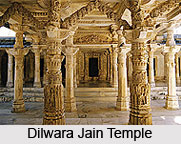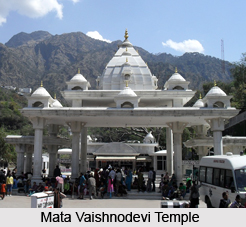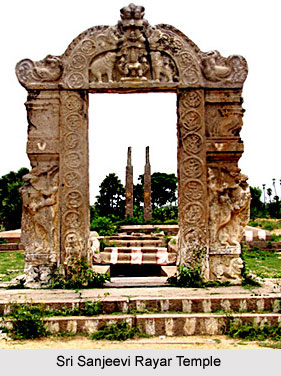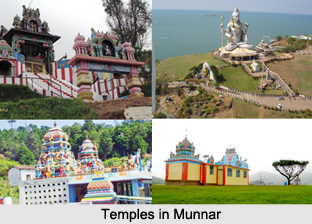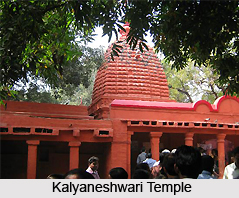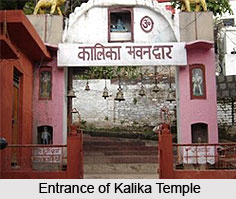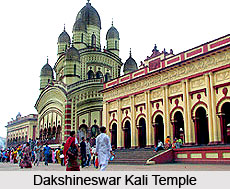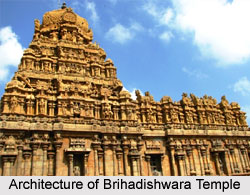Introduction
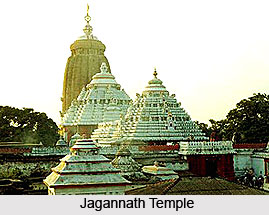 History of Indian temples is deeply rooted in the ancient period and is widely influenced by the impact of religion in various regions. India, historically associated to have served the territory bound by the Hindu Kush and the Himalaya mountain ranges is a country saturated with exquisite temples. These unrivaled and artistic architectures profusely contribute to the Indian cultural heritage. Irrespective of the grandeur, colossal perimeters, lofty spires, or being humble and decent in structure, Indian temples are unique and unparalleled in legend and history. The earliest temples and religious monuments can be witnessed in the rock-cut cave temples by the Western Ghats and the Eastern Ghats. They are traced through the Barabar Hills in Bihar, Elephanta Caves, Bhaja Caves, Karla Caves, Kanheri Caves, Nasik, and Ellora Caves- all in Maharashtra, Badami Cave Temples in Karnataka, and Pallavaram and Mahabalipuram in Tamil Nadu which date back to the 3rd and the 2nd century B.C. These cave temples were caverns directly cut out from the mountains.
History of Indian temples is deeply rooted in the ancient period and is widely influenced by the impact of religion in various regions. India, historically associated to have served the territory bound by the Hindu Kush and the Himalaya mountain ranges is a country saturated with exquisite temples. These unrivaled and artistic architectures profusely contribute to the Indian cultural heritage. Irrespective of the grandeur, colossal perimeters, lofty spires, or being humble and decent in structure, Indian temples are unique and unparalleled in legend and history. The earliest temples and religious monuments can be witnessed in the rock-cut cave temples by the Western Ghats and the Eastern Ghats. They are traced through the Barabar Hills in Bihar, Elephanta Caves, Bhaja Caves, Karla Caves, Kanheri Caves, Nasik, and Ellora Caves- all in Maharashtra, Badami Cave Temples in Karnataka, and Pallavaram and Mahabalipuram in Tamil Nadu which date back to the 3rd and the 2nd century B.C. These cave temples were caverns directly cut out from the mountains.
Dominating amongst these countless bunch of Hindu temples, various religious monuments of Jains, Buddhists, Sikhs, Islamic or Christianity are also present. Running almost parallel in exquisiteness and grandness, Hindu temples indeed bear a rich history from even the uncounted epoch, ranging from mere brick structure to massive rock-cut architecture.
Architectural History of Indian temples
Since the ancient period, Hindu temple architecture followed a set of fundamental rules. The sanctum sanctorum containing the statue or symbol of the deity is a square cell. A pyramidal structure rises above that, which symbolizes the Meru Mountain, abode of the Hindu Gods. This section of the temple was considered the most sacred of all. Temples did not seem to have existed during the Vedic Period. The practice of casting images of deities mentioned in the Vedic mantras might have come into vogue by the end of the Vedic age. The Yajnasala of the Vedic period gradually got metamorphosed into temples.
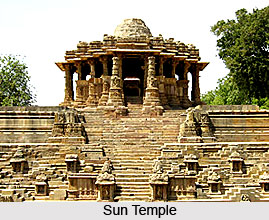 Historical archives on the earliest of Indian temples state that the edifices were built with perishable materials like timber and clay. Cave-temples, temples carved out of stone or built with bricks were to arrive much later. Heavy stone structures with flamboyant architecture and sculpture belong to a still later period. Despite the basic pattern remaining the same, variations appeared, steadily leading to the fruition of different styles in temple architecture. Broadly speaking, these can be branched into the northern and the southern patterns. The northern style, technically termed Nagara, is spotted by the curvilinear towers. The southern style, known as Dravida, has its towers in the mold of truncated pyramids. A third style, Vesara by name, is sometimes added, which blends in itself both these mentioned patterns.
Historical archives on the earliest of Indian temples state that the edifices were built with perishable materials like timber and clay. Cave-temples, temples carved out of stone or built with bricks were to arrive much later. Heavy stone structures with flamboyant architecture and sculpture belong to a still later period. Despite the basic pattern remaining the same, variations appeared, steadily leading to the fruition of different styles in temple architecture. Broadly speaking, these can be branched into the northern and the southern patterns. The northern style, technically termed Nagara, is spotted by the curvilinear towers. The southern style, known as Dravida, has its towers in the mold of truncated pyramids. A third style, Vesara by name, is sometimes added, which blends in itself both these mentioned patterns.
History of Indian Temples in Nagara Style
The earliest temples in north and central India which have withstood the ravages of time belong to the Gupta period, precisely from 320-650 A.D. Mention can be made of some of the extraordinary temples at Sanchi, Tigawa (near Jabalpur in Madhya Pradesh), Bhumara (in Madhya Pradesh), Nachna (Rajasthan) and Deogarh (near Jhansi, Uttar Pradesh).
History of Indian Temples in Dravida Style
The history of temples in the southern part of the country speaks about the earliest surviving instances found in Tamil Nadu and northern Karnataka. The cradle of Dravidian School of architecture, Tamil Nadu, was the country that evolved from the earliest Buddhist shrines, both rock-cut and structural. The later rock-cut temples which belong approximately to the period 500-800 A.D., were mostly Brahmanical or Jain, patronaged by three great ruling dynasties of the south, the Pallavas of Kanchi in the east, the Chalukyas of Badami in the 8th century A.D. and the Rashtrakutas of Malkhed. The Rashtrakutas had ascended to power and made unforgettable contributions to the development of south Indian temple architecture. The Kailasanatha temple at Ellora belongs to this period.
History of Indian Temples in Vesara Style
In the west (northern Karnataka) the Aihole and Pattadakal group of temples (5th to 7th centuries) exhibit early essays to evolve as an acceptable regional style based on tradition. Among the better known early structural temples at Aihole are the Huchimalligudi and Durga temples, as also the Ladkhan temple, all attributed to the period within 450-650 A.D. Equally authoritative are the temples of Kasinatha, Papanatha, Sangamesvara, Virupaksa and others in Pattadakal near Aihole, as also the Svargabrahma temple at Alampur (Andhra Pradesh). It is in some of these temples, built by the later Chalukyas, that the Vesara style can be wholly witnessed, an amalgamation of the northern and the southern patterns. History of Indian temples can be truly viewed to have metamorphosed in a pretty systematic basis, with reigning dynasties contributing incessantly.
Literary History of Indian Temples
One unique factor about the history of Indian temples is that umpteen ancient texts laying down the formal architectural styles prevalent in the various regions have survived to date. They are referred to time and again so that the comprehensive text called Vastu Sastra can acknowledge its sources in the Sutras, Indian Puranas and Agamas, besides Tantric literature and the Brihat Samhita. But all of them agree on one single issue that styles can be divided into three forms of Nagara, Dravida, and Vesara. They employ respectively the square, octagon and the apse or circle in their plan of temple architecture. During its later evolutionary years, the Vesara style adopted the square for the sanctum, whereas, the circular or stellar plan was retained for the Vimana. These three styles, however, do not relate themselves sternly with three different regions, but as indicating only the temple groups.
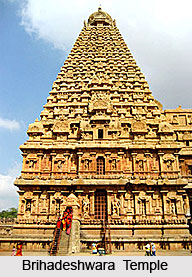 The Vesara, which came to prevail mostly in western Deccan and south Karnataka, was a derivation from the apsidal chapels of the early Buddhist period which the Brahmanical faith adopted and improved enormously. In its origin, the Vesara is as much north Indian as it is of west Deccan. Similarly, among the 6th - 7th-century shrines of Aihole and Pattadakal, evidence can be found of the Nagara style in the Prasadas or Vimanas (referring to various modes of architecture). The Dravida style from Tamil Nadu became widely popular throughout south India only from the Vijayanagara ruling onwards. While the Prasada or Vimana of the Nagara style rises perpendicularly from its base in a curvilinear form, the Dravida rises like a stepped pyramid, tier upon tier. The historical evolvement of Indian temples from northern style came to prevail in Rajasthan, Upper India, Odisha, the Vindhyan uplands and Gujarat.
The Vesara, which came to prevail mostly in western Deccan and south Karnataka, was a derivation from the apsidal chapels of the early Buddhist period which the Brahmanical faith adopted and improved enormously. In its origin, the Vesara is as much north Indian as it is of west Deccan. Similarly, among the 6th - 7th-century shrines of Aihole and Pattadakal, evidence can be found of the Nagara style in the Prasadas or Vimanas (referring to various modes of architecture). The Dravida style from Tamil Nadu became widely popular throughout south India only from the Vijayanagara ruling onwards. While the Prasada or Vimana of the Nagara style rises perpendicularly from its base in a curvilinear form, the Dravida rises like a stepped pyramid, tier upon tier. The historical evolvement of Indian temples from northern style came to prevail in Rajasthan, Upper India, Odisha, the Vindhyan uplands and Gujarat.
History of Indian Temples in the Pallava Reign
During the next thousand years (600 A.D. to 1600 A.D.) of historical evolution of Indian temples, there was a phenomenal growth in temple architecture both in quantity and quality. The first in the series of southern or Dravidian architecture was initiated by the Pallavas (reigning from 600 A.D. to 900 A.D.) The rock-cut temples in Mahabalipuram, of the Ratha type, and the structural temples like the Shore Temple at Mahabalipuram and the Kailasanatha and Vaikuntha Perumal temples in Kanchipuram (700-800 A.D.) are the soundest illustrations of the Pallava style. Pallavas had laid the foundations of the Dravidian school, which blossomed to its full extent during the Cholas, the Pandyas, the Vijayanagara Empire and the Nayakas. The temples in this period were being built of stone, thus becoming bigger, more complex and flamboyant with sculptures.
History of Indian temples in the Chola Reign
Dravidian architecture reached its peak height during the Chola period (900 A.D. to 1200 A.D.) by becoming grandiose in size and endowed with blissful proportions. Among the most exquisite of the Chola temples is the Brihadeshwara temple at Tanjore with its 66 meters high Vimana, the most grandiloquent of its kind. The later Pandyans who succeeded the Cholas improved on the Cholas by introducing sophisticated and complex ornamentation and big sculptural images, many-pillared halls, new annexations to the shrine and towers (Gopurams) on the gateways.
History of Indian Temples in the Vijayanagara Empire
The mighty temple complexes of Madurai and Srirangam in Tamil Nadu established a pattern for the Vijayanagara builders (ruling from 1350A.D. to 1565 A.D.), who followed the Dravidian tradition. The Pampapati and Vitthala temples in Hampi are still-standing examples of this epoch. The Nayakas of Madurai, who succeeded the Vijayanagara kings (1600-1750 A.D), made the Dravidian temple complex even more intricate and meticulous, by making the Gopurams exceedingly tall and ornate and adding pillared passageways within the temple`s extensive compound. Indian temple history was becoming more grand and majestic, with the edifices turning out to be even better than the previous instance.
History of Indian Temples during the Hoysala Reign
Contemporary to the Cholas were the Hoysalas, who had ruled the Kannada country and in the process improved on the Chalukyan temple architectural style. Hoysalas had accomplished their task by building exceptionally over-elaborate temples in various parts of Karnataka, that is noted for the sculptures in the walls, depressed ceilings, lathe-turned pillars, and fully sculptured Vimanas. Among the most famous of these temples are the ones at Belur, Halebid, and Somanathapura in south Karnataka, which are always classified under the Vesara style.
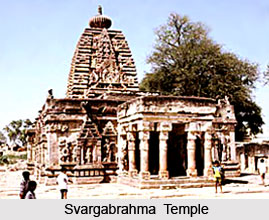
History of Indian Temples in Other Regions
In the northern part of the country, chief developments in Hindu temple architecture took place in Odisha (750-1250 A.D.) and Central India (950-1050 A.D.). History of Indian temples and its gradual evolution was also rapidly witnessed in Rajasthan (10th and 11th century A.D.) and Gujarat (11th-13th century A.D.). The Lingaraja temple (Bhubaneshwar), Jagannath Temple (Puri) and Surya (Konark) represent the quintessential Odisan style. The temple at Khajuraho, built by the Chandelas, the Sun temple, Modhera (Gujarat) and another temple at Mt. Abu built by the Solankis possess their distinct features under Central Indian architecture. Bengal with its temples built in bricks and terracotta tiles and Kerala with its temples having peculiar roof structure, suited to the heavy rainfall from the regions. As such, these two maritime states had formulated their own localized atypical styles.
History of Indian Temples Abroad
To add further to the prestigious and esteemed list of the historical evolvement of Indian temples, mention can also be made of the various Hindu temples outside India, especially in the south-east Asian countries. These countries had in ancient times, actually included under the Indian ruling kingdoms. The earliest of such Hindu temples are found in Java; the Shiva temples at Dieng and Idong Songo. The group of temples of Lara Jonggrang at Prambanan is a magnificent example of Hindu temple architecture. Other temples worth mentioning include the temple complex at Panataran (Java), the rock-cut temple facades at Tampaksiring of Bali, the `mother` temple at Besakh of Bali, the Chen La temples at Sambor Prei Kuk in Cambodia, the temple of Banteay Srei at Angkor and the celebrated Angkor Vat complex built by Surya Varman II.
Styles of Worship in Indian Temples
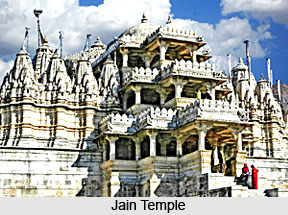 Styles of worship in Indian temples have their origin in the When speaking about Indian temples, the very foremost element that mind recalls is the enormity and redefining immensity of these age-old edifices, sculpted by perhaps unknown designers. Temple building in India has been recounted since pre-Christian epoch, when even they were not given that much importance. In fact, history states that the time and effort that just went behind constructing a temple spanned from few days to several years, depending on the plan and projections of the temple periphery. It is also not unknown that religious scuffles, conflicts and differences were a bare order of the day. As such, religious division, classification and feelings of reigning supreme at times hindered faithful progression. With Hinduism noted to have been evolved foremost as a sacred faith and religion, it was some time since other religions began their unending journey of belief and reverence. Buddhism and Jainism had thus cropped up little later, paving way for the umpteen styles of worship in Indian temples making its way to ancient Indian history and even legends.
Styles of worship in Indian temples have their origin in the When speaking about Indian temples, the very foremost element that mind recalls is the enormity and redefining immensity of these age-old edifices, sculpted by perhaps unknown designers. Temple building in India has been recounted since pre-Christian epoch, when even they were not given that much importance. In fact, history states that the time and effort that just went behind constructing a temple spanned from few days to several years, depending on the plan and projections of the temple periphery. It is also not unknown that religious scuffles, conflicts and differences were a bare order of the day. As such, religious division, classification and feelings of reigning supreme at times hindered faithful progression. With Hinduism noted to have been evolved foremost as a sacred faith and religion, it was some time since other religions began their unending journey of belief and reverence. Buddhism and Jainism had thus cropped up little later, paving way for the umpteen styles of worship in Indian temples making its way to ancient Indian history and even legends.
Styles of worship in Indian temples can basically be separated into the three cardinal Indian religious faiths of Hinduism, Buddhism and Jainism. India being a country assimilating and admitting loads of diverse religious factions, it is rightly termed a `sovereign socialist secular democratic republic` since post-Independence. As such, teeming massed is witnessed each day paying their hallowed visits to their respective religious institutions, espousing the style of worship in their own free will. For instance, Hindus are known to make an elaborate affair prior to visiting a temple. Devotees are known to take a dip in holy waters, followed by donning of new and clean clothes, after which they are also witnessed to buy the prasadam (offering to be dedicated to the Almighty), finally entering the sanctum bare-footed. The prasadam generally contains sweets, incense sticks, flowers and other fragrances. Hindu style of worship in temples in India also illustrates enormous footfall on auspicious days, when the temple priests take over and wield all action for a complete and successful culmination of a puja. It is also exhibited that followers of Hinduism are forbidden to consume any kind of non-vegetarian food prior to prayer offerings.
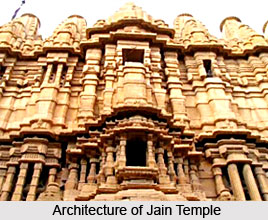 On the other side of faith and reverence stands the Buddhist style of worship in the Buddhist temple clusters in India. Buddhist religious places predominate in pristine white, evoking a strange feel of peacefulness and soulful belief. Buddhism rituals and practices comprise extremely intricate and meticulous prayers. Prayer or puja in Buddhism is chiefly a mode of verbalising dedication towards Almighty and making offerings to Him. Style of worship in Indian Buddhist temples scrupulously abide by meditation, forming a part of the ritualistic practices. The prayers are broached with the calling forth of a sangha. After the Sangha has been evoked, sadhaka or dharma students complete three prostrations, also popular as three gates or three aggregates. They comprise the body, the speech and the mind. The three prostrations also specify that the student has acknowledged the three bodies of Buddha: the Dharmakaya, the Smbhogakaya and the Nirmanakaya. While abiding by the ritualistic prostrations, it is customary that five parts of the body touch the ground. These five body parts include the two palms, the two knees and the forehead, representative of the five elements of earth, water, fire, air and space. The other renditions of the protestations typify the five wisdoms springing forth from the five Buddha families and the five Buddha energies.
On the other side of faith and reverence stands the Buddhist style of worship in the Buddhist temple clusters in India. Buddhist religious places predominate in pristine white, evoking a strange feel of peacefulness and soulful belief. Buddhism rituals and practices comprise extremely intricate and meticulous prayers. Prayer or puja in Buddhism is chiefly a mode of verbalising dedication towards Almighty and making offerings to Him. Style of worship in Indian Buddhist temples scrupulously abide by meditation, forming a part of the ritualistic practices. The prayers are broached with the calling forth of a sangha. After the Sangha has been evoked, sadhaka or dharma students complete three prostrations, also popular as three gates or three aggregates. They comprise the body, the speech and the mind. The three prostrations also specify that the student has acknowledged the three bodies of Buddha: the Dharmakaya, the Smbhogakaya and the Nirmanakaya. While abiding by the ritualistic prostrations, it is customary that five parts of the body touch the ground. These five body parts include the two palms, the two knees and the forehead, representative of the five elements of earth, water, fire, air and space. The other renditions of the protestations typify the five wisdoms springing forth from the five Buddha families and the five Buddha energies.
To end the esteemed and extraordinary line-up of styles of worship in Indian temples appeared the Jain mode of worship. Jains are known to worship several other Tirthankaras (the twenty-four spiritual teachers, the last being Mahavira) besides Mahavira, the most admired of the holy lot. There exists another intrinsic fact within Jainism that they essentially dwell within the country itself, never feeling the necessity to branch outside the subcontinent. As such, they possess their own sweet mannerisms of venerating their Lords. Jainism is publicly known to utilise silver very generously. The Jain style of worship in Indian temples firstly commences with the obligation to refrain rigorously from meat, fruit and wine and drink only that water which has been utilised earlier by someone else for cooking. The judgment behind this thought is that if by drinking such water if a Jain does harm to any living organism in the water, the guilt for that rests not on the Jain who drinks it but on the person who first used it for cooking. For that very same reason a Jain monk never bathes, lest he should unwittingly destroy life. In times of offering prayers to Almighty, as such, Jainism never binds devotees under any stringent rules. A Jain monk is allowed to move about only on foot and he is also prohibited from lighting a fire or to breathe explicitly, for which a piece of white cloth is tied loosely around his mouth.
Followers of Jainism, prior to entering a Jain temple are always of the habit to tie a cloth around the mouth. By this process, they too prevent the unintended killing of living organisms in the air by inhaling them. Besides the alms bowl, a Jain monk is supposed to carry a broom to brush off the ground before them as they walk on it. This act is performed to clear away whatever living creatures that might be present on the walking path.












